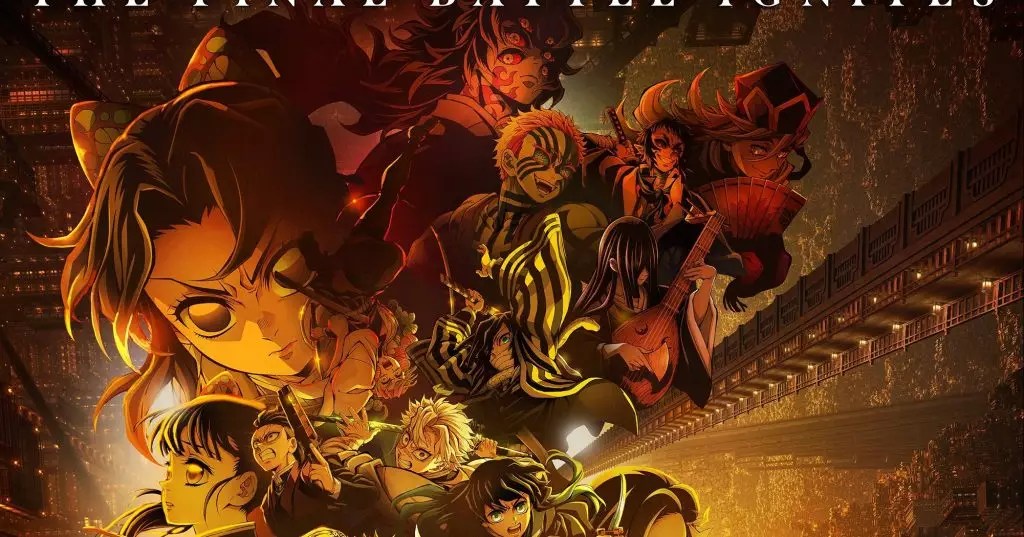The recent triumph of Demon Slayer: Kimetsu no Yaiba Infinity Castle in Japan isn’t just a box office victory—it’s a seismic shift that challenges our perceptions of anime’s place in popular culture. Breaking records on multiple fronts, the film’s phenomenal opening day, weekend, and holiday figures illustrate an undeniable reality: anime, once considered niche, now commands the attention of millions and dominates mainstream entertainment markets. This isn’t merely a fleeting trend; it’s a testament to a transformation in cultural valuation and consumer appetite.
What makes this success so compelling is not solely the numbers but the narrative it weaves about cultural influence. The film’s staggering revenue and attendance figures highlight a societal appetite for stories rooted in complex characters and rich lore, moving beyond superficial entertainment toward a form that fosters community and shared experience. Demon Slayer’s rise exemplifies a shift where anime, once marginalized within the global entertainment hierarchy, now stands shoulder-to-shoulder with Hollywood blockbusters, reshaping industry paradigms.
Challenging Hollywood’s Monopolistic Hegemony
This surge raises critical questions about the monopolistic tendencies of mainstream Western cinema. For years, Hollywood’s dominance partly stemmed from a belief that only their productions could answer global audience demands. Demon Slayer’s record-breaking performance, especially with its groundbreaking Imax figures in Japan, demonstrates that audiences crave authenticity, artistry, and culturally distinctive narratives—qualities often underrepresented in Hollywood fare.
The international release strategy further exemplifies this shift. By planning a global rollout that begins in August and September, creators and distributors send a clear message: regional storytelling is not only viable but increasingly vital. This movement suggests an evolving industry landscape where diverse voices and unique cultural expressions take precedence over homogenized blockbuster formulas. It indicates a potential democratization of global entertainment, where Japan’s rich anime tradition is no longer a niche market but a driving force shaping global narratives.
Deepening Cultural Roots and Commercial Viability
Demon Slayer’s immense commercial success also sheds light on the complex relationship between culture and commerce. It’s tempting to dismiss these figures as mere consumerism, but the deeper story involves how storytelling—especially through anime—intersects with cultural identity and societal values. The series and its movie reflect themes of perseverance, familial bonds, and moral integrity that resonate on a universal level, transcending language and borders.
Furthermore, the investment in high-quality animation and storytelling underscores an industry that is increasingly professionalized and globally ambitious. The fact that the film surpassed previous record-holders like Mugen Train, which itself was a cultural phenomenon, underscores a sustained enthusiasm for narratives rooted in Japan’s artistic traditions. This isn’t just about a box office tally; it signifies a recognition of anime as a serious art form capable of competing on the world stage.
However, this success does not come without risks. The industry must grapple with maintaining cultural authenticity while navigating rapid commercialization. Over-reliance on franchise popularity risks commodifying the very essence that makes anime captivating—its cultural distinctiveness and depth of storytelling. As the world increasingly recognizes and consumes these narratives, it’s crucial that creators preserve the integrity of their craft.
Implications for Global Entertainment Dynamics
Beyond Japan, the global release plans for Infinity Castle mark a turning point. With Crunchyroll leading the international push, it’s evident that the market demands authentic Japanese anime storytelling now more than ever. This transition could challenge Western-dominated entertainment industries to embrace diversity, cultural specificity, and nuanced storytelling.
International audiences are no longer content with superficial adaptations or Western remakes masked as “cultural adaptations.” Instead, they seek genuine experiences rooted in authentic traditions. Demon Slayer’s success indicates that audiences value art and storytelling that reflect their diverse identities and histories, prompting Hollywood and other Western industries to rethink their approach. It challenges a long-standing narrative: that global appeal hinges mainly on special effects and star power. Instead, compelling narrative, cultural richness, and emotional depth emerge as the true engines of a story’s universality.
Lastly, this phenomenon invites us to consider the future of cultural diplomacy—how stories like Demon Slayer serve as bridges across cultural borders, fostering understanding and empathy. As anime becomes a global phenomenon, it’s not just about entertainment; it’s about the liberal values of cultural exchange, artistic freedom, and shared storytelling that can uplift and unite societies. In a time where divisiveness often dominates discourse, the widespread embrace of a culturally specific story offers a glimmer of hope—that storytelling, when authentic and heartfelt, remains a formidable tool for connecting humanity.

